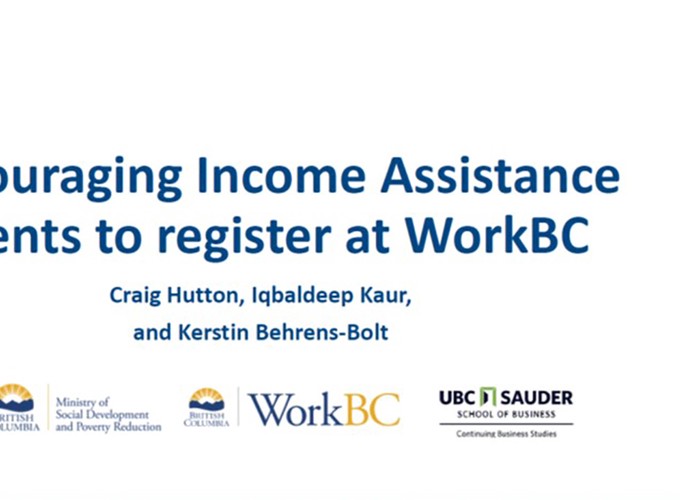Abstract
As part of the Province’s pandemic response, employment obligations were suspended for clients supported by the BC Ministry of Social Development and Poverty Reduction (SDPR)’s Expected-to-Work (ETW) income assistance program, during which time WorkBC enrolment rates fell from 15% to 5%. After SDPR resumed enforcing employment obligations (March of 2022), WorkBC engagement only partially recovered (~8%, by October of 2022). Front-line SDPR staff we interviewed relayed complaints from ETW clients of multiple behavioural barriers preventing them from connecting with WorkBC, including: (1) a lack of awareness of the services offered by WorkBC, (2) information/cognitive overload, (3) a lack of motivation or interest, (4) forgetting to register, and (5) impersonal service. We hypothesized that sending ETW clients an educational reminder message designed to address these barriers using behavioural insights would encourage more of them to register for WorkBC Employment Services.
445 ETW clients who joined SDPR’s caseload in February, 2023, but had not yet registered for WorkBC Employment Services, were randomly selected to either be sent a MySelfServe electronic message about the services offered by WorkBC and benefits of using those services (a “gain message”; treatment group, n = 189), or not (control group, n = 256). Participant data on income assistance utilisation, and on nine socioeconomic and demographic characteristics (age, housing status, etc.), were used to evaluate the impact of the message and other factors on WorkBC registration rates via logistic regression. A causal forest machine learning model was also used to uncover interactions between the treatment and other factors.
The causal forest revealed an interaction between treatment and education, which a logistic regression model subsequently identified as representing a statistically significant doubling of the WorkBC registration rate for the treatment group vs. the control group, among ETW clients with a high school diploma (29.5% vs. 14.4%; OR [95% CI ] = 2.49 [1.25, 4.96]), but not among less-educated ETW clients (OR [95% CI] = 0.65 [0.29, 1.45]). An expanded logistic regression model including socioeconomic and demographic variables as covariates also revealed lower WorkBC registration rates among ETW clients with no fixed address vs. housed clients (aOR1 [95% CI] = 0.19 [0.03, 0.64]) and among clients living in the Interior Health region vs. residents of the Fraser Health region (aOR [95% CI] = 0.23 [0.08, 0.60]). These results indicate that the gain message effectively encourages ETW clients with a high school diploma to register for WorkBC Employment Services. However, the gain message did not work for everyone: alternative options should be explored for helping less-educated clients, those with no fixed address, and to resolve regional disparities.
